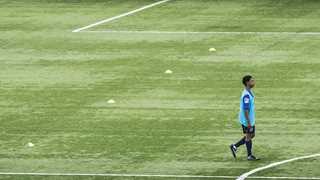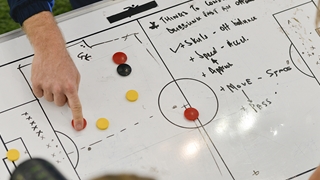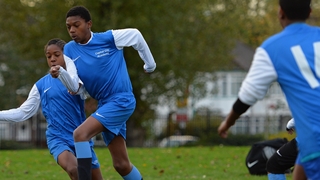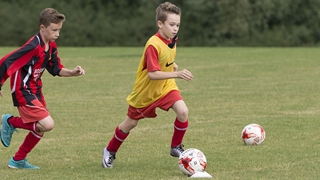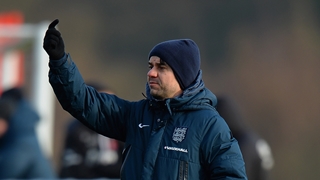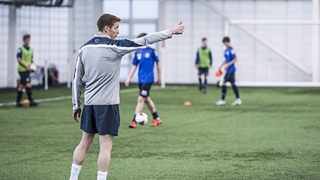
Ben Bartlett, FA youth coach developer, explains how a creative games programme can provide players and coaches with a variety of opportunities to manage the game.
If we value young footballers responding in a variety of ways in different scenarios, it is important to consider how, as coaches, we establish the conditions that expose players to different challenges.
In a football context, some of these situations occur organically and challenge the players to respond as they happen. This gives the players the chance to think about how it went and how their approach may change if similar situations occur again.
If we agree this is beneficial, what value is there in structuring some of these scenarios into a player’s development programme to ensure they occur more frequently?
During a recent discussion with a group of coaches it was agreed that supporting the development of tactically adaptable players who can self-manage was an aspiration. This discussion came from the observations of a coach whose under-14 team had recently entered an end of season tournament.
About Ben
Role: FA youth coach developer
Follow: @Benbarts
The tournament included three 20 minute group games followed by a Semi-Final and Final for the top two in each group. This is a common tournament design.
The coach's team won the first game 5-0 playing with purpose throughout - an approach which at the end of the tournament they felt was a mistake. They drew a physically tough second game 1-1 with the eventual winners, before qualifying for the Semi-Finals with a 4-0 victory in which they scored two early goals. Similar to the first game they continued to attack with pace throughout the 20 minutes.
In the Semi-Final they went a goal down early on - a scenario they were yet to experience during this tournament - and found time was limited as the games were relatively short. The players were fatigued having played the previous games at full-tilt and struggled to establish an intense press to shift the momentum of the game. As a result, they conceded a second goal late on to exit the tournament.
From the discussion it was felt that the players were inexperienced and unpractised in playing the games in different ways and didn’t know how to speed the game up, slow it down, or recognise how and when to press more effectively.
Tournament design
1 - Three teams. Play each team twice. Win: 3 points, Draw: 1 point, Defeat: 0 points. Win the league.
2 - First round of games: 30 minutes non-stop on a big pitch. Second round of games: 15 minutes non-stop on a smaller pitch.
3 - The second round of games begins with the score from the first game flipped. For example, if Athletic beat Rovers 3-1, the second game starts with Rovers leading Athletic 3-1.
4 - The only goals that are recorded in the table are the ones you actually score.
The conditions agreed in points 2 and 3 challenged the players and coaches to adapt their tactics when the game situation changed. It also asked teams to consider the benefits and drawbacks of pushing for additional goals when they were winning. How many goals would be enough? How many goals behind will you be when the game is played again? What are the challenges when the game is shorter in duration?
Pitch constraints can change the way a team approaches a game
The pitch and task constraints contributed to the strategies adopted in the games. In one particular fixture the yellow team -who had rested the previous game - took an early 2-0 lead against the purples who played back-to-back games. On a big pitch the yellows decided to maintain possession, mostly in the middle third, to:
1) Conserve energy
2) Frustrate the opposition
3) Retain balance within their shape
This kind of approach to constraining the games programme to generate specific learning opportunities can be met with mixed feelings. Some suggest that the game of football was designed in a particular way and presents its own challenges and adults should stop interfering.
Advocates imply that subtle and and more deliberate shifts within the way competition is structured supports players to practise certain elements that may contribute to the development of qualities that are valued. Something other sports are currently trialling. You decide, and maybe ask the players too.


